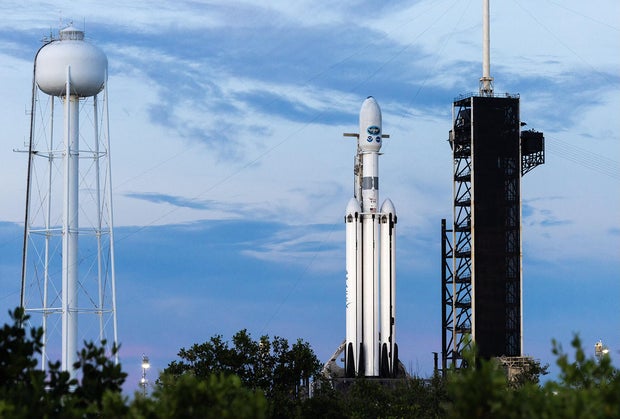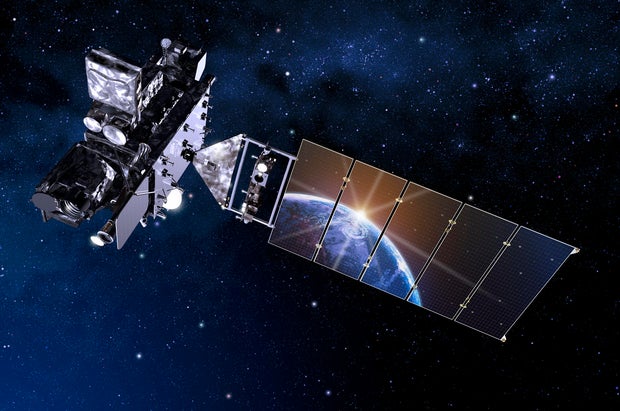/ CBS News
NASA comes back down to earth
A hurricane-tracking GOES weather satellite, the final member of a four-satellite fleet at the heart of an $11 billion upgrade to the nation's forecasting infrastructure, is poised for a late-afternoon launch Tuesday atop a powerful SpaceX Falcon Heavy rocket.
"NOAA's geostationary satellites are an indispensable tool for protecting the United States and the one billion people who live and work in the Americas," said Pam Sullivan, GOES program director. "They provide a constant real-time view of weather and dangerous environmental phenomena across the Western hemisphere."

Appropriately enough, perhaps, the primary obstacle to launch of the latest Geostationary Operational Environmental Satellite — GOES-U — is the same sort of weather it was built to observe. Forecasters predicted a 70% chance of late afternoon cloud buildups and storms in Florida that could prevent takeoff during the rocket's two-hour launch window.
But if the weather cooperates, the Falcon Heavy will thunder away from historic pad 39A at the Kennedy Space Center at 5:16 p.m. EDT, propelled by more than 5 million pounds of thrust from the 27 engines at the base of three strapped-together first stage boosters.
After helping push the rocket out of the dense lower atmosphere, the two side boosters are expected to separate, reverse course and fly back to dramatic side-by-side landings at the Cape Canaveral Space Force Station while the central core state continues the climb to space.
A minute-and-a-half after the side boosters separate — four minutes after liftoff — the core stage will drop away, breaking up as it falls to the Atlantic Ocean below.
The single Merlin engine powering the rocket's second stage was programmed to fire three times over the next four-and-a-half hours to reach a highly elliptical "transfer" orbit where the GOES satellite will be released.

Once flying on its own, GOES-U will be renamed GOES-19. It will use on-board thrusters to circularize its orbit at an altitude of 22,300 miles above the equator where it will circle the globe in lockstep with Earth's rotation, taking 24 hours to complete one orbit.
Satellites in such "geosynchronous" orbits appear to hang stationary in the sky, allowing uninterrupted views of the Earth below. Such orbits are used by GOES-type weather satellites, imaging and eavesdropping spy satellites and communications satellites, both military and civilian.
For GOES-19, SpaceX designed a trajectory that reduces the amount of propellant the satellite needs to reach the planned geostationary orbit, leaving enough to increase the satellite's lifetime from 15 to 20 years or more.
After extensive tests and checkout, GOES-19 will be maneuvered to its operational location at 75 degrees west longitude where it will have an uninterrupted view stretching from the west coast of Africa to central North America. Another GOES satellite monitors the Pacific Ocean and the western U.S., Canada and central America.
Equipped with six state-of-the-art instruments, including a powerful camera that will provide near real-time high-resolution imagery, the National Oceanic and Atmospheric Administration says the new satellite will replace an older model to provide continuous observations from the "GOES-East" location through the 2030s.
GOES-19 is the final member in a set of four advanced satellites, each one costing roughly $500 million. GOES-R, now GOES-16, was the first satellite in the series, launched in November 2016. NOAA is developing even more powerful satellites that eventually will replace GOES-16, 17, 18 and 19.
Bill Harwood has been covering the U.S. space program full-time since 1984, first as Cape Canaveral bureau chief for United Press International and now as a consultant for CBS News.
